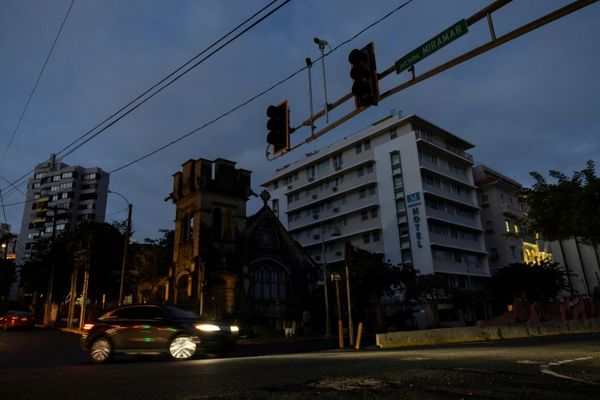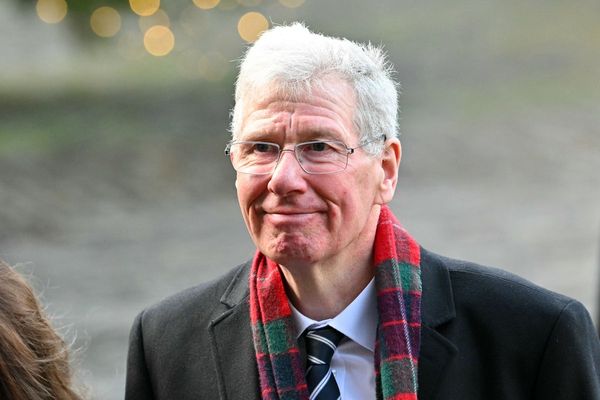
On April 29, India reported over 386,000 new cases of COVID-19 and over 3,500 deaths. It was one of the worst ever days of the country’s pandemic experience, just one week out from the peak of its deadly second wave. The capital of New Delhi was virtually out of space to cremate the COVID-19 dead—the bodies just kept coming in.
That morning, India’s health minister, Harsh Vardhan, visited a hospital in the city. In over a year of leading his country’s pandemic response, the minister has taken few questions from the media, much like his prime minister, Narendra Modi. In a prepared statement delivered to the media after his visit, the minister’s main point was one that has been central to the Modi government’s messaging on COVID-19: While every death was sad, India had one of the lowest mortality rates in the world.
Since the beginning of the pandemic, India’s ruling Bharatiya Janata Party (BJP) government has sought to argue that India has handled the pandemic better than most any country, as evidenced by its low COVID-19 mortality rate. This triumphalism was on display in Modi’s now infamous January 2021 speech to the World Economic Forum, in which he said that “India is among those countries which have succeeded in saving the lives of the maximum number of its citizens.
The datapoint at the heart of this contention has been the case fatality rate: the share of reported COVID-19 deaths proportionate to reported cases. By the end of India’s second wave this April and May, the country’s case fatality rate stood at roughly 1.56 percent, against 2.86 percent in the United States and 9.14 percent in the United Kingdom, according to national data aggregated by Our World in Data. Even now, India’s rate is at 1.3 percent, against 1.79 percent in the United States and 2.74 percent in the United Kingdom.
The trouble is that the case fatality rate is a flawed indicator to begin with—and only makes sense in a country that’s doing a half-decent job of counting its COVID-19 dead. For a long time now, it has been clear that India is not.
Part of the problem is systemic. India went into the pandemic with a death registration system that recorded only 92 of every 100 deaths. In Bihar, a state of 123 million people, just half of all deaths are registered in a given year. A third of all people who die receive no medical attention at all after death. And 4 out of 5 deaths are not medically certified, meaning that the cause of death is not medically established. With a system of this sort, it was inevitable that India would miss counting many COVID-19 deaths, just as it undercounts deaths from other diseases.
But other issues are new and exclusive to the pandemic. The Indian government’s official guidance for recording COVID-19 deaths states that if a person dies without being tested for COVID-19—or had tested negative but displayed symptoms typically associated with the virus—their death should be classified as a “suspected or probable COVID-19” death. In practice, however, only people who tested positive for COVID-19 and then died soon after in hospital with a clear progression of the disease are counted as COVID-19 deaths, officials from multiple Indian states told me. Most states have also constituted state-level “death audit committees,” which examine all death certificates that mention COVID-19 and then apply further filters to determine which counted as “real” virus deaths. In some cases, the deaths of people with comorbidities were attributed to those chronic conditions, rather than to COVID-19. All of this further depresses the official COVID-19 death count.
Early indications that there was something exceptional about India’s mortality data also came from serosurveys—large surveys carried out on a sample population to check for the presence of antibodies to the SARS-CoV-2 virus, which would indicate the proportion of people exposed to the virus and, as a result, its spread. Serosurveys also allowed scientists to construct an infection fatality rate value—the ratio of reported COVID-19 deaths to total infections, rather than reported cases. (An infection can be asymptomatic and can go unnoticed without a serosurvey.) The infection fatality rates that could be calculated from India’s official COVID-19 death toll and serosurveys were orders of magnitude lower than those being produced around the world. This cast questions about the numerator—namely, the country’s official COVID-19 death count.
And then the second wave hit India.
In April and May 2021, Indian Twitter appeared to have turned into one massive helpline trying to get someone’s father or wife a hospital bed. New cases rose at an astonishing pace, and, for well over a month, India reported more than 3,000 deaths every day. Intrepid reporters fanned out across the country, reporting a spate of mysterious fever deaths in rural India, where people were going untested, untreated, and ultimately uncounted. Journalists who knew their cities well began to push back against official death tolls that were clearly understating the devastation they were seeing on the ground. From crematoriums and burial grounds, they reported how several times the number of officially recorded dead people were being given funerals every day.
One way of approaching the true toll of COVID-19 is to look at deaths from all causes during the pandemic and note if there is an increase. If a significant number of excess deaths is reported, that could point to missed or uncounted COVID-19 deaths. This system has been used in the United Kingdom, South Africa, and Peru to gain a better understanding of missed COVID-19 deaths. The only trouble is that India does not make this data available.
By developing sources in three Indian states—Madhya Pradesh, a large, poor state in central India; Andhra Pradesh, a state with relatively middling income in southern India; and Tamil Nadu, a relatively prosperous state also in the south—I was able to access official all-cause mortality data for these states.
The numbers for Madhya Pradesh in particular were shocking: As the second wave surged through the state in May 2021, deaths from all causes leapt to five times their usual value. Madhya Pradesh’s excess mortality in 2021 was more than 40 times the official COVID-19 death toll for the same period. The undercounting for Andhra Pradesh was just as bad, but it was substantially lower in Tamil Nadu. Subsequent reports by other journalists have shown significant undercounting in the impoverished states of Bihar and Uttar Pradesh—for which there is partial public data—and relatively low undercounting in the developed southern state of Kerala.
The new numbers highlight the extent of underreporting of COVID-19 cases and deaths in India, something that Indian reporters have been pointing out for the better part of a year. But they also underscore the yawning gaps in Indian democracy as it currently functions. A prime minister and health minister have been permitted to continue leading their country’s pandemic response without facing tough media questions. The government has made little data related to the virus available; for basic data on cases and deaths, Indian and international media as well as researchers around the world are turning to covid19india.org, a volunteer-driven, crowdsourced website that aggregates official government data on the pandemic—something the government itself refuses to do. Instead, it has been allowed to run with a false and dangerous narrative that India’s suspiciously low death toll was the mark of a successful strategy rather than a failed data mechanism. And this state of affairs has been permitted to continue, one year in.
The pandemic has brought together a community of public-spirited journalists, scientists, and data enthusiasts who, through hard work and doggedness, often at great personal risk, have pieced together the story of India’s tryst with COVID-19. But without the government taking the first step toward accepting its failures and opening up data, this is duplicating democracy, not deepening it.







